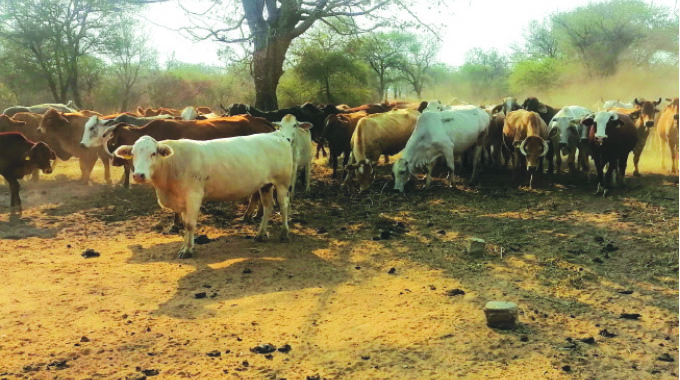‘National herd re-building programme climbs a rung higher’

Sharon Shayanewako
THE country’s drive to eliminate poverty deaths among cattle is gaining traction with the Government set to roll out a Forage Bank Programme that will benefit at least 500 000 households in the country's eight rural provinces.
This came out in the Ministry of Lands, Agriculture, Fisheries, Water and Rural Development report on the state of preparedness for the 2022/2023 cropping season.
The livestock Forage Bank Programme is synonymous with the Pfumvudza/Intwasa one and sees cattle farmers receiving input packages comprising 20kg fertiliser or one seed pack from the following three — 5kg velvet beans, 2, 5kg sun hemp and 2, 5kg lablab.
The scheme is meant to provide a supplementary diet for cattle and enhance livestock production. Approximately 500 000 cattle farmers were targeted in 2021/2022 season while another 500 000 households are under a pass-on scheme in 2022/2023 season.
The programme will be rolled out at an estimated cost of US$9, 6 million in all rural provinces for the period of 2021 to 2023.
Department of Livestock Production and Development director Alban Mhindurwa last Friday revealed that the input packages were for two Pfumvudza plots (0, 1248ha) with one plot expected to be harvested at 50 percent flowering stage for production of forage bales.
The other plot will be for seed production for future use and passing on to other cattle farmers & quot; After harvesting, the crop residues will be baled and stored for winter supplementary feeding, & quot; he observed.
Despite the fact that cattle are grazers and grasses are readily available in all provinces, production of forage crops is essential to provide a balanced diet to livestock.
The Department of Livestock Production and Development has stressed the importance of forage banks especially with high-nutrient yielding leguminous forage crops like velvet beans, which is high in nitrogen(N)/crude protein content.
The crop can withstand long dry spells especially when established early in the growing season. It provides early dry season grazing or fodder for hay making or silage making.
Sun hemp contains crude protein of 12, 5- 15 percent in green material and digestibility of 65-75 percent. It is a pasture crop for hay making and an ideal cover crop.
Lablab is a subtropical annual legume and a high quality forage production crop.
It contains crude protein (21-36 percent) and 66 percent digestibility.
Livestock specialist Miss Rutendo Nyahoda last Friday said grass only was inadequate for cattle and the need to supplement them with legumes was vital " Basically the production of forage crops is vital to ensure that livestock get a balanced diet.
The fodder contains crude protein, which is used for winter supplementation during the dry season when grazing is of poor quality. Cattle lose weight during the dry season due to poor quality feed.
They only get roughage from dry pastures and being deprived of other essential nutrients.
So farmers should produce forage crops to avoid nutrient deficiencies in cattle 's diet,& quot; she explained Miss Nyahoda added that during the winter season, most cattle are unhealthy to the extent that they cannot bear the burden of ploughing in summer season & quot; Most cattle are unhealthy in winter season, as they only get roughage from dry pastures. They are so unhealthy to the extent that they cannot bear the burden of ploughing the fields in summer season "
The objective of producing forage crops is to enhance the protein source so that the country ends up having better breeds and healthy cattle,” she said.
The Government has initiated this programme to assist smallholder farmers with velvet bean, sun hemp and lablab to improve the diet of livestock.
Farmers will receive the seeds, fertiliser, chemicals to boost the output of forage crop production.









Comments